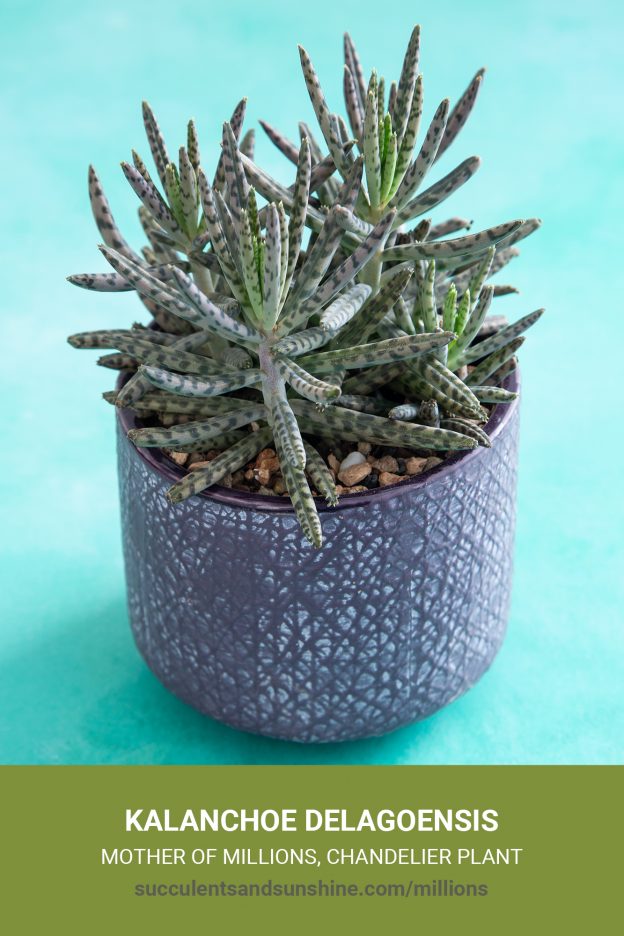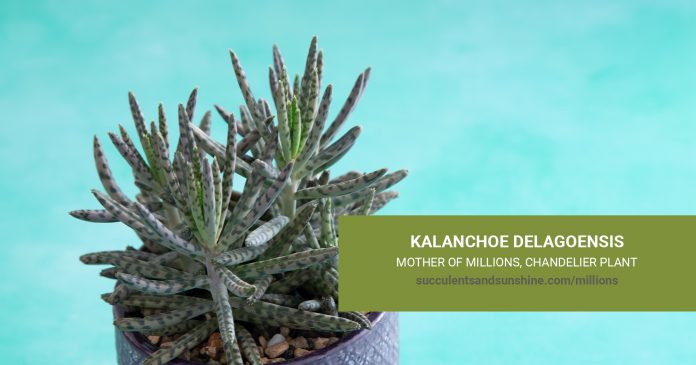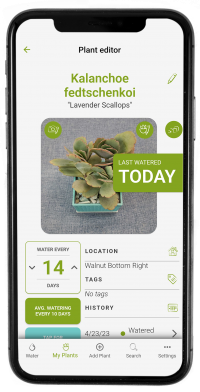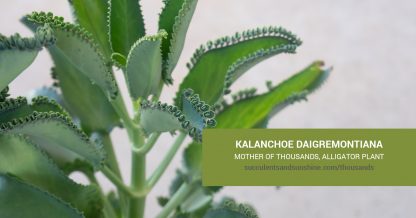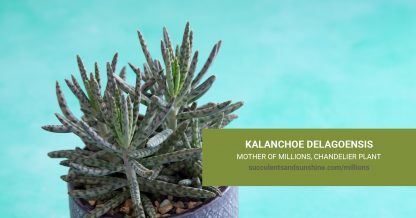Care and Propagation Information
General Care for Kalanchoe delagoensi "Mother of Millions"
Kalanchoe delagoensi "Mother of Millions" is an easy-to-grow succulent, perfect for xeriscaped yards. It also grows well in container gardens. Because it propagates so easily, care should be given to where this succulent is planted.
Watering
"Mother of Millions" has typical watering needs for a succulent. It's best to use the “soak and dry” method, and allow the soil to dry out completely between waterings.
And be sure to get our FREE watering cheat sheet so you can learn how to tell if your succulents are getting too much water (and how to save them if needed).
Where to Plant
"Mother of Millions" is not cold-hardy, so if you live in a zone that gets colder than 30° F (-1.1° C), it's best to plant this succulent in a container that can be brought indoors. It does well in full to partial sun.
Plant in an area of your garden that gets 6 hours of sunlight a day. If planting indoors, place in a room that gets a lot of sunlight, such as near a southern-facing window (if you're in the Northern Hemisphere).
Often Mistaken For
How to Propagate Kalanchoe delagoensi "Mother of Millions"
Kalanchoe delagoensi "Mother of Millions" is a prolific propagator, and often considered to be noxious due to its ability to propagate so easily and quickly.
Cuttings
To grow "Mother of Millions" from cuttings, use a sterile, sharp knife or pair of scissors. Remove a stem from the main plant, and allow it to callous for several days before planting in well-draining soil. Water whenever the soil has dried out completely.
Plantlet
To remove a plantlet from the mother plant, simply pull gently from the leaf.
There are several things you can do with the babies now. You can allow the plantlet to sit for a day or two to callous over, and then place on well-draining soil.
You can also treat the plantlets like germinated seeds. Place them on well-draining soil, and cover them with clear plastic to create a small greenhouse. Grow under the plastic film until they form roots, and are able to be transplanted into a separate planter
